Differences between Preschool and Pre-k
Posted by Learning Box Preschool on Mar 27th 2020
The purpose of early childhood education is to build a firm foundation for children where they can learn to communicate, create, collaborate, and think critically. In essence, preschool and prekindergarten focus on fostering growth as a preparation for future learning; preschool prepares children for a social interactions and classroom setup while prekindergarten offers a platform for children to sharpen their skills and learn to work independently.
Although their functions might seem to overlap, they are two different educational levels with specific purposes. Here we list a few differences that set them apart that we can discuss for deeper insight.
Preschool vs. Pre-k: Classes Focuses
Preschool emphasizes the development of simple problem-solving skills by learning colors, drawing, numbers, and shapes. At this level, children are still not developed to learn complex subjects. Comparatively, Pre-K tends to focus more on advanced learning. Here children learn math, science, and other subjects that help to grow their critical skills. They are also groomed for in-depth learning at this level.
Preschool vs. Pre-k: Ages and Stages
Another core difference between preschool and prekindergarten is the age group; the former accommodates children between the ages of 2 and 4 while the latter is for children between 4 and 5 years. Preschool is appropriate for small children who are somewhat older for baby school but not yet grown for substantial learning. Similarly, children in the prekindergarten level are developed enough to learn content that can prepare them for the kindergarten level.
Preschool vs. Pre-k: School Readiness
Both preschool and pre-K address school readiness in their curriculum. However, the approach is different; while preschool revolves around playful learning, pre-K prepares children for things that they will learn in kindergarten. Moreover, prekindergarten children are ready to learn more advanced topics and tend to show the ability to think critically and cognitively.
For instance, they are able to reenact a story or make costumes after watching a play. This shows that at this point, they have already developed a mind that can tackle slightly challenging topics.
Preschool vs. Pre-k: Requirements
Typically, not a lot is expected of children at the preschool level since they are still quite young. At this level, they are allowed to interact and play without being subjected to any formal teaching. On the other hand, children at the prekindergarten level are taught how to adjust to a classroom environment, work in groups, sit for longer periods without being distracted, and follow instructions. The intention is to ensure that they are already familiar with classroom activities before they get to the kindergarten level.
If you are wondering which level of childhood learning to enroll your child, these differences can help you to make a more informed decision.
Choosing the right Preschool vs. Pre-k Curriculum
At Learning Box Preschool, we believe both levels of education are extremely important. That’s why we offer high-quality curriculum for both preschool and prekindergarten education to facilitate learning at these levels. Our Little Learning Box is for preschool ages 2-3 years old and our Small Learning Box and Big Learning Box are for prekindergarten children who are ages 4-5.
Our AFFORDABLE and TIME-SAVING monthly preschool curriculum kits are designed for childcare providers including homeschools, childcare centers, preschools, daycares, and parents. Our curriculum is user friendly. We provide step by step easy to follow instructions that will not intimidate first time teachers and satisfies those who teach professionally. Contact us to learn more about our services and products.

